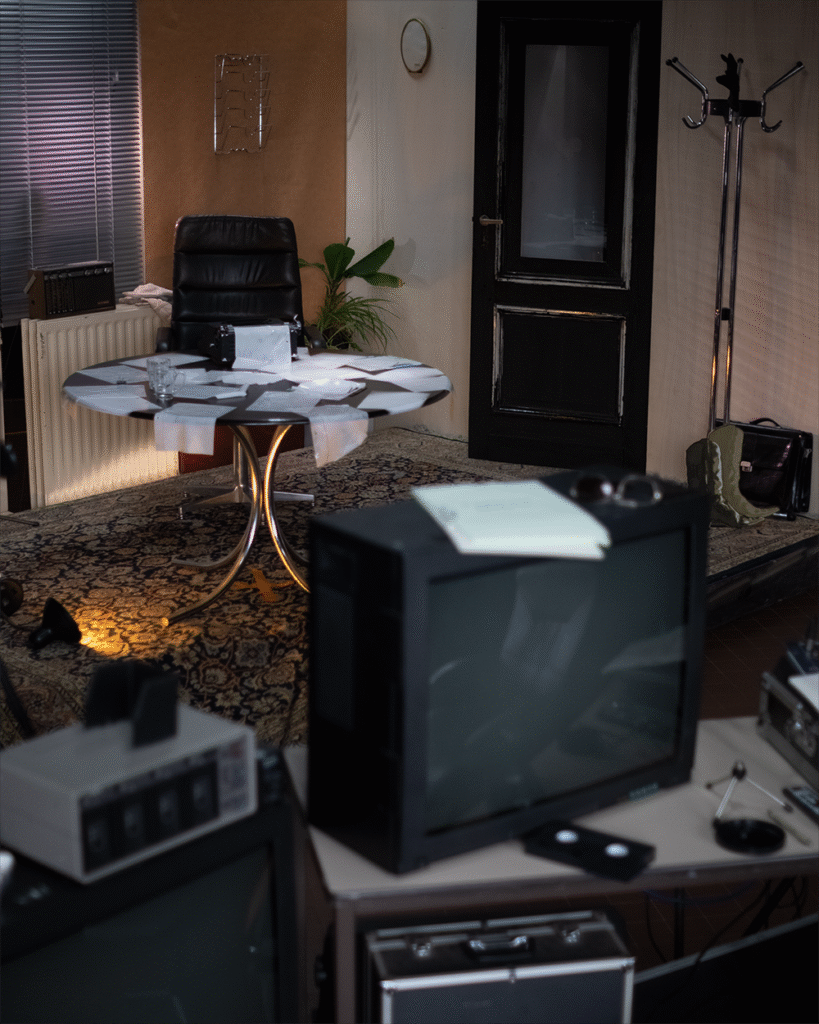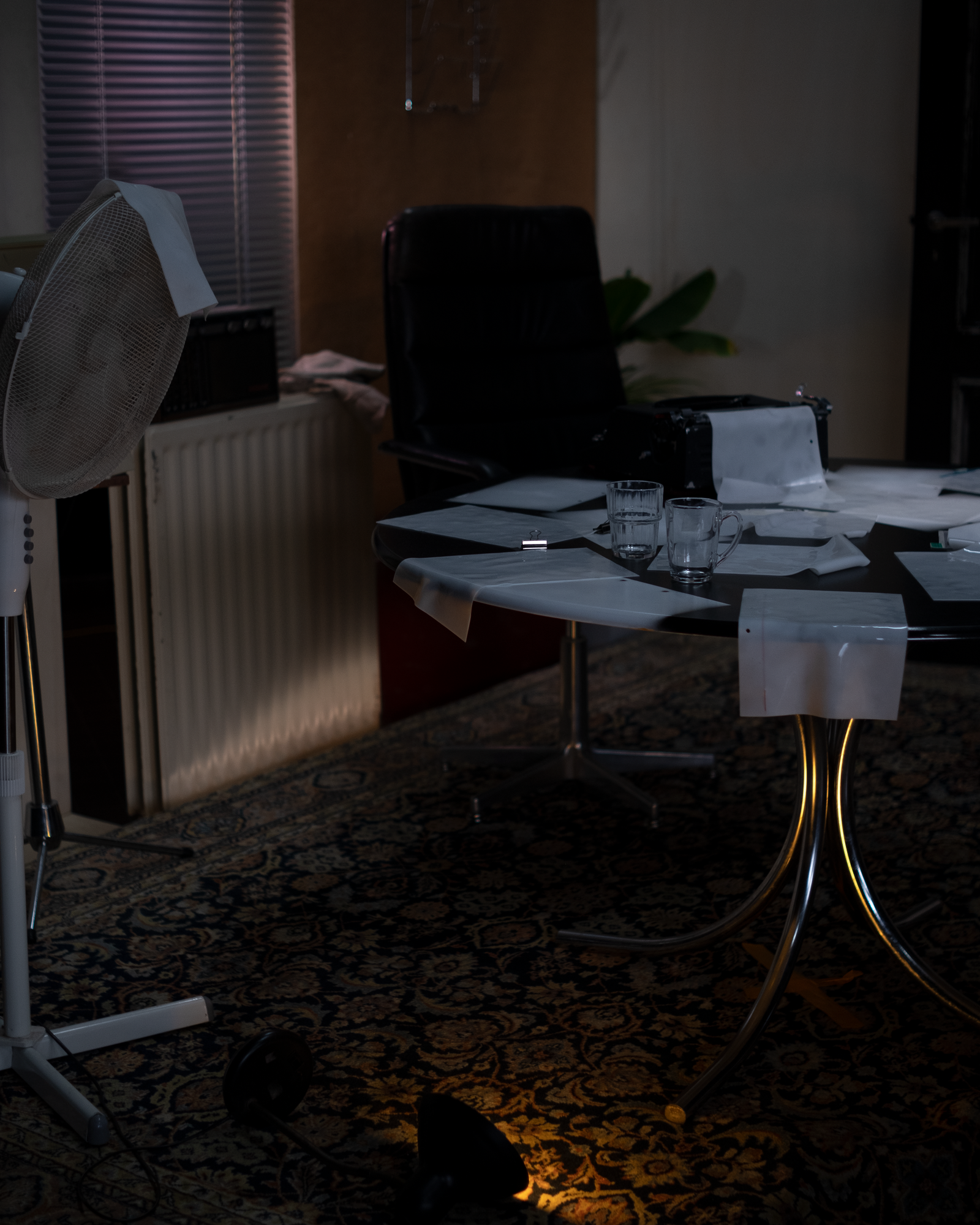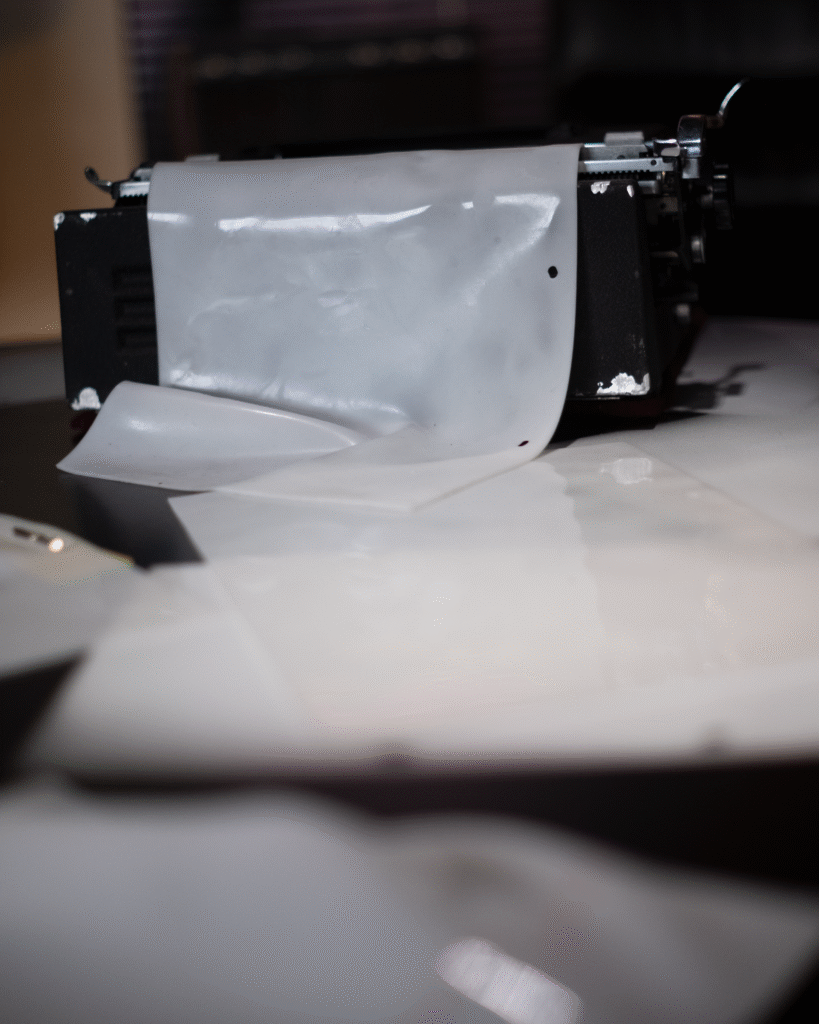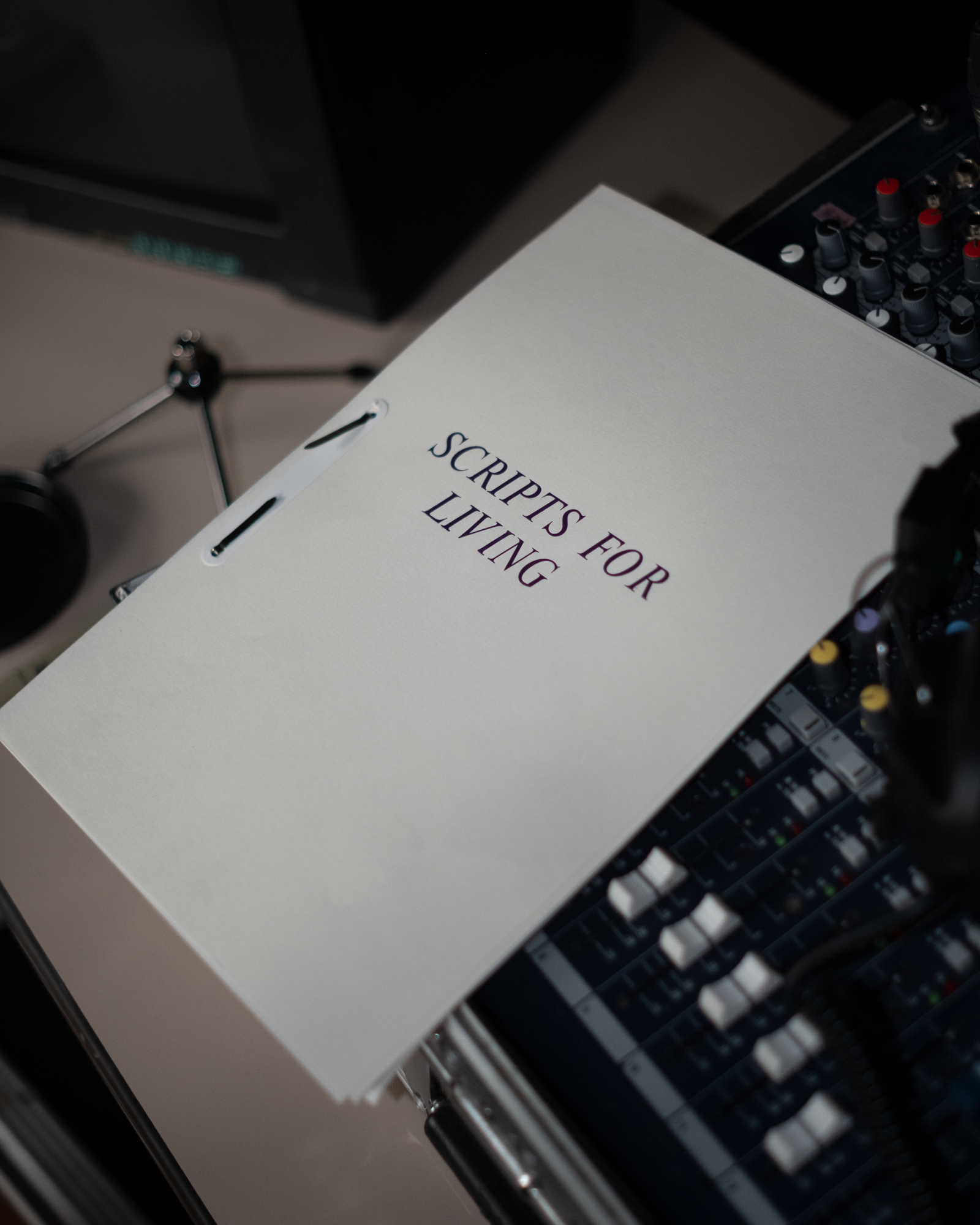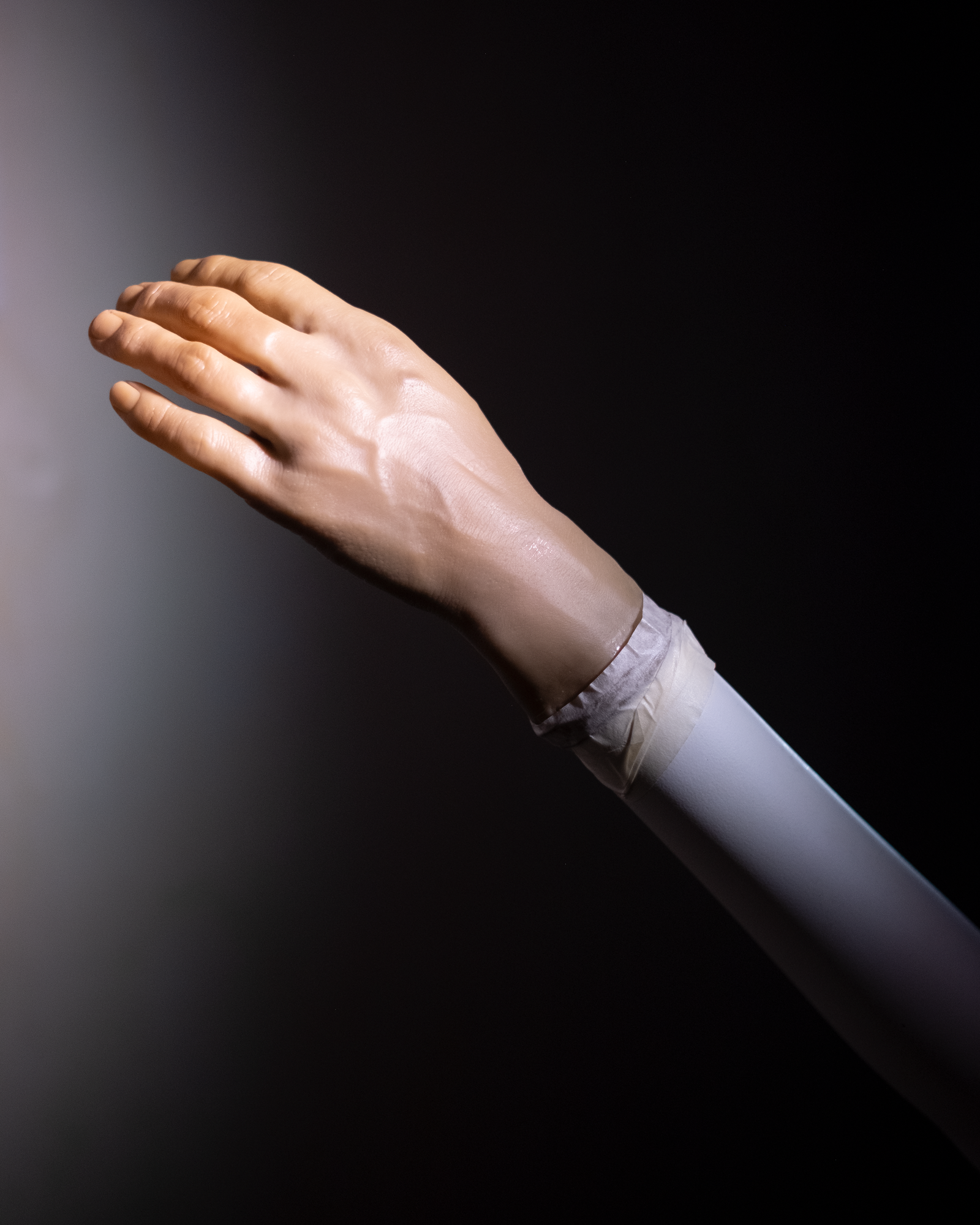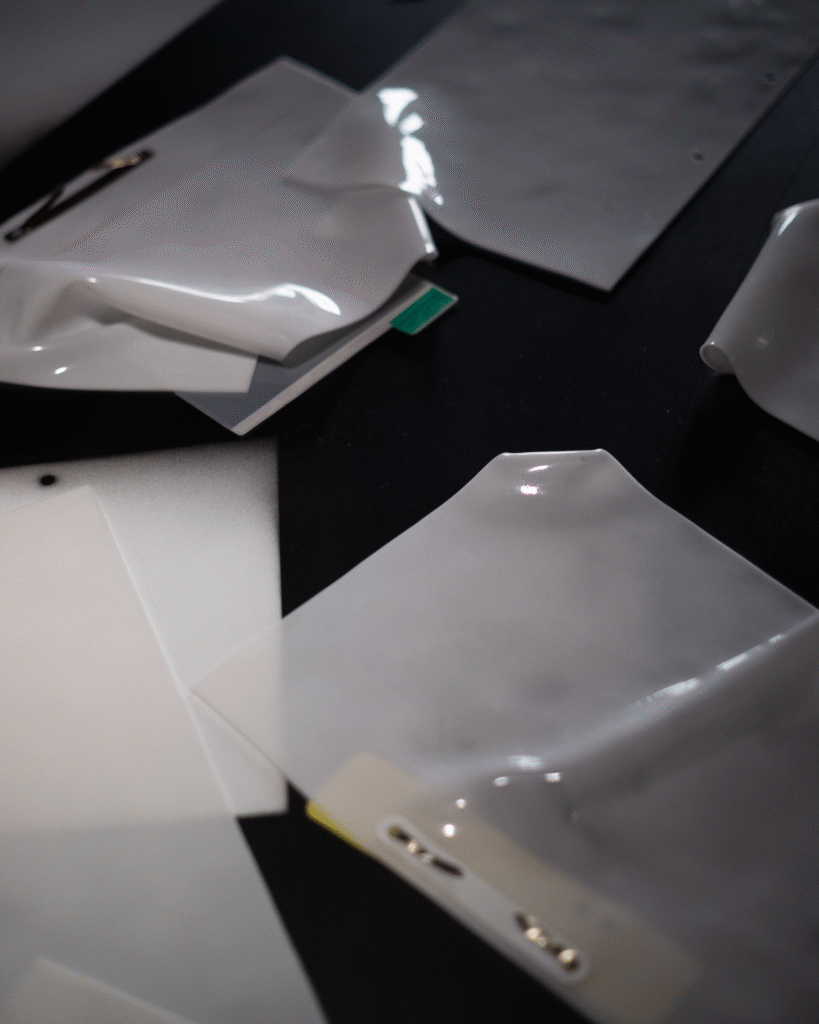
Waiting for the words (2024) APR001
Works were displayed across the walls and floor, carefully placed to evoke a sense of narrative without offering a clear storyline. Artificial lighting and grainy VHS monitors created an atmosphere of gentle tension, as if something might be about to happen—or had just ended. A movie set in between takes. Behind a curtain, a mechanical hand slowly waved, its shadow cast onto a nearby windowframe. This simple gesture became a prominent and uncanny presence in the room.
Peleman, along with Sem Beerens and Tamara Sam, inhabited the space during the installation, taking on the roles of filmmakers, assistants, and technicians. As part of the performance, they handed out blank scripts to visitors—inviting them to take part rather than being passive observers.
This installation marked both the conclusion of Peleman’s Master project and the first collaborative work under the name ALAS!. The space evolved over a week of adjustments, with the only constant being a 1960s Telefunken radio, playing throughout. Its presence subtly shaped the mood—sometimes comforting, sometimes dissonant.
The mechanical hand, designed with the help of Ignaz Van Der Stighelen, was the only moving element in the installation. Everything else remained still, open, suggestive. Visitors were free to interpret what they saw, to piece together their own meaning. Scattered objects hinted at possible stories; the blank scripts— titled Scripts for Living — posed quiet questions: How do we respond to absence? What do we make of an unfinished narrative?
The room became a temporary gathering space for students and friends, drawn by its familiarity and openness. In its stillness and simplicity, it offered space for reflection—and for imagining what comes next.
performed and exhibited at the Royal Academy of Fine Arts from June 14 – 28th, 2024
This Project granted the following awards and nominations;
– Horlait Dapsens Award (2024)
– Hugo Roelandt Award (2024)
– Metropolis M Nomination (2024)
